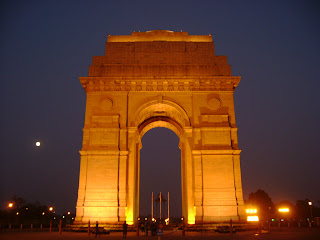History Of District Court Bhiwani
The Bhiwani District came into existence on
22.12.1972 and was formally inaugurated on January 14,1973. Sh. R.S.
Gupta was the first District & Sessions Judge, Bhiwani. From initial
strength of 10-15 members, the District Bar Association, Bhiwani has
also grown in strength and presently there are about 1332 Advocates
enrolled as members of District Bar Association, Bhiwani. The district
derives its name from the headquarter town Bhiwani which was believed to
be a corruption of the word Bhani. It was founded by the Rajput named
Neem and Bhani. The Bhani word later on changed to Bhiani and
subsequently to Bhiwani.
The District of Bhiwani situated in between latitude 28.19 degree
and 29.05 degree and longitude 75.28 degree and 76.28 degree. It is
bounded in the north by the Hisar (Hissar) district, in the east by the
Rohtak district, in the south by the Mahendergarh district of Haryana
and the Jhunjhunu district of Rajasthan and in the west by the Churu
district and a part of the Jhunjhunu district of Rajasthan. (See
Gazetteer of India, Haryana State, Bhiwani District, Page No.1).
The district occupied an area of 5099 Sq.Km. It is 124 Kms from
Delhi and 285 Kms from Chandigarh. By road District Bhiwani is connected
with cities like Delhi, Rohtak, Pilani, Jaipur and by rail it is
connected with Delhi, Mathura, Malda Town, Jaipur, Firozpur, Chandigarh
and Amritsar.
There are two main industrial units in Bhiwani i.e. Bhiwani
Textile Mills established in the year 1937 and another T.I.T. Mills
established in the year 1943 set up by well known Birla Group (See
Gazetteer of India, Haryana State, Bhiwani District, page No.194). There
is also a Technical Institute of Textile a renowned educational
institution opened and run by Birla family itself besides many other
important Technical and Engineering Institutes in District Bhiwani. It
has been a centre of commerce since the time of Mughals.
There are numerous temples in Bhiwani including Gauri Shankar temple
and in near past it was also known as CHHOTI KASHI OF INDIA.
2. HISTORY OF SUB DIVISION CHARKHI DADRI
Charkhi Dadri is a town and a municipal committee in Bhiwani
district in the state of Haryana, India. The town was made by joining
the villages of Charkhi and Dadri after urban development. Charkhi was
founded by Dada Bilhan Singh (a Phogat tribal leader), and the name is
derived from the local name of old warriors of Jatsangh - kshatriya.
Dadri was founded by Raja Bilhan Singh, a younger son of the Maharaja
Prithvi Raj Chauhan according to some history books.
3. HISTORY OF SUB DIVISION LOHARU
Loharu is a city and a municipal committee in Bhiwani district in
the Indian state of Haryana; it is one of the 4 administrative
sub-divisions of the district, and has 119 villages in the Loharu
Tehsil. It was the seat of the eponymous princely state during the
British Raj, established in 1803; and an important reminiscence of that
is the Loharu Fort, now an important tourist destination of the
district.

















